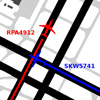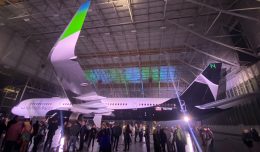U.S. Transportation Secretary Ray LaHood and Federal Aviation Administration (FAA) Administrator Randy Babbitt announced on Friday that the number of serious runway incursions at the nation’s airports has dropped by 50 percent from 2009, the second consecutive year that the number of serious incursions was cut in half.
The number of serious runway incursions at the nation’s airports dropped from 12 in the fiscal year of 2009 to six in the fiscal year of 2010, which ended on September 30.
Friday’s announcement reflects a steady, significant improvement in runway safety over the last decade. In fiscal year 2000 there were 67 serious runway incursions. Of the six incursions this fiscal year, three involved commercial aircraft.
Several years ago, the FAA launched an intensive effort to improve runway safety which included the expedited installation of new technology at airports, expanded requirements for improved signage and markings at airports and improved pilot training on runway conflict scenarios.
Since then, the FAA and pilot groups also have conducted extensive outreach and training for general aviation pilots.
“We continue to make terrific progress in the area of runway safety and the credit should go to the entire aviation community,” LaHood said. “I’m thrilled that we’ve further reduced serious incursions, and I look forward to additional improvements in the years ahead.”
“The goal we are working towards is zero runway incursions,” Babbitt said during a press conference at Boston’s Logan Airport where he highlighted runway safety technology. “I’m confident that the right combination of education and technology will help us get there.”
During the press conference, Babbitt announced that the Runway Status Lights system at Boston’s Logan Airport has completed a successful testing period. The runway safety system gives direct warnings to pilots of potential runway incursions or collisions through a network of red lights that are embedded in the airfield pavement.
The lights warn pilots when it is unsafe for a pilot to enter, cross or proceed down a runway. Pilots must stop when the red lights are illuminated and may not continue without clearance from air traffic control.
The new technology, which is also being used at Dallas/Ft. Worth (DFW), San Diego (SAN) and Los Angeles (LAX), was successfully tested for 90 days at Boston (BOS). The FAA partnered with the Massachusetts Port Authority (Massport) to install the system.
The FAA funded the design and development of the system, as well as the equipment, while Massport paid for the installation of the airfield lighting equipment.
Runway Status Lights systems are scheduled to be installed at 23 airports across the country beginning next year.







